Thales Alenia Space @ VivaTech 2019
VivaTech, a three-day event dedicated to all facets of technological innovation, is about to kick off in Paris. A can’t miss meeting of major corporations, innovative startups and disruptors, Viva Technology is expecting more than 100,000 participants, 9,000 startups and 1,900 journalists, from 125 countries. The space sector will be present, of course, alongside Thales.
You will love this event is you’re a fan of the International Space Station. For example, VivaTech will talk about Columbus, the famous space lab in the ISS that has already welcomed astronauts from the United States, Europe, Japan, Russia and Canada to carry out cutting-edge scientific experiments. Also in the spotlight will be a brand-new technology from Italy: PIUME, a habitat than can be used in extreme environments, including mountains, deserts, arctic regions and space. Thales Alenia Space will provide an update on its new in-orbit servicing offer, a very timely new capability as operators seek to extend their satellites’ service lives. Moving higher up, way beyond the 400 kilometer altitude of the International Space Station, we’ll also be looking at new Moon adventures, in honor of the 50th anniversary of the first human landing on the Moon. At the same time, we’ll be looking at other space exploration endeavors, including the ExoMars mission to the Red Planet, the iconic Cassini-Huygens mission to Saturn and its moons, and the recently launched BepiColombo mission to explore the mysteries of Mercury.
Following the recently published and very alarming report by the United Nations on the unprecedented collapse in biodiversity, with an estimated one million plant and animal species threatened with extinction, VivaTech is organizing a conference on satellites as a key to understanding our planet.
Columbus, a unique science lab circling the Earth at 400 kilometers
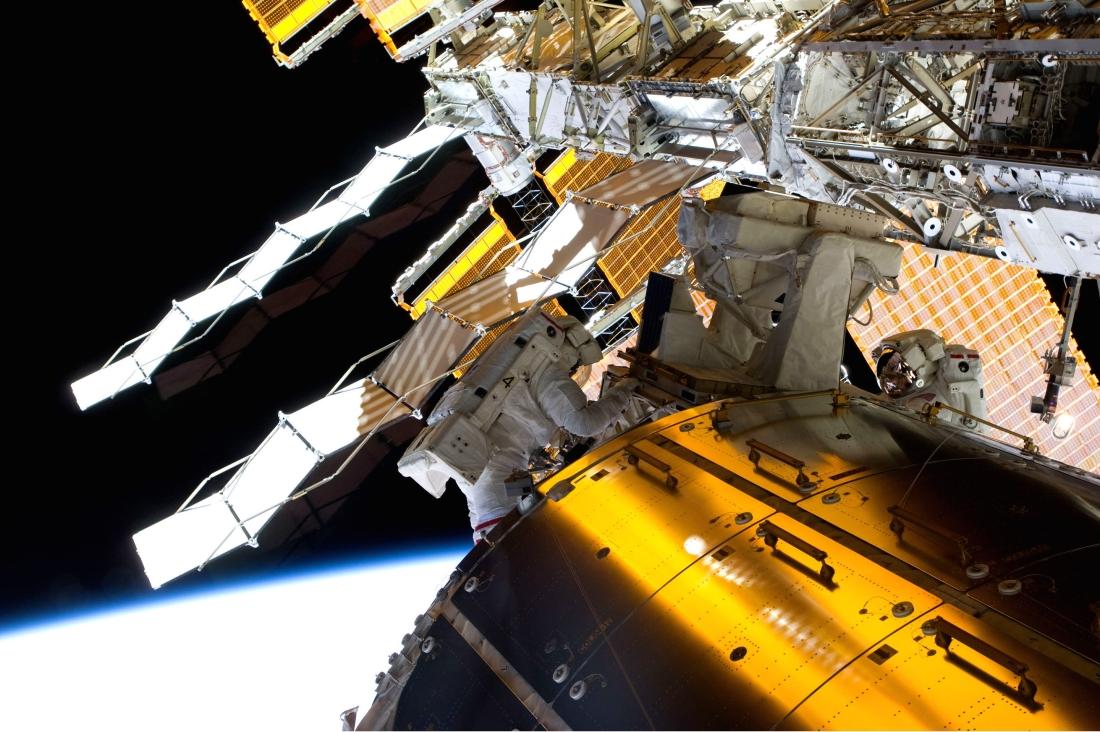
© ESA/NASA
Launched in February 2008, Columbus is a versatile, multidisciplinary and multi-user platform. The “space lab” is primarily used for scientific research, and continues to host a number of tests and demonstrations in physics, medicine, biology, fluid mechanics and many other areas.
Thales Alenia Space played a lead role in this program, working for the prime contractor Airbus. We participated in system definition, supported the final integration and testing phases, and developed and pre-integrated the lab’s thermomechanical structure.
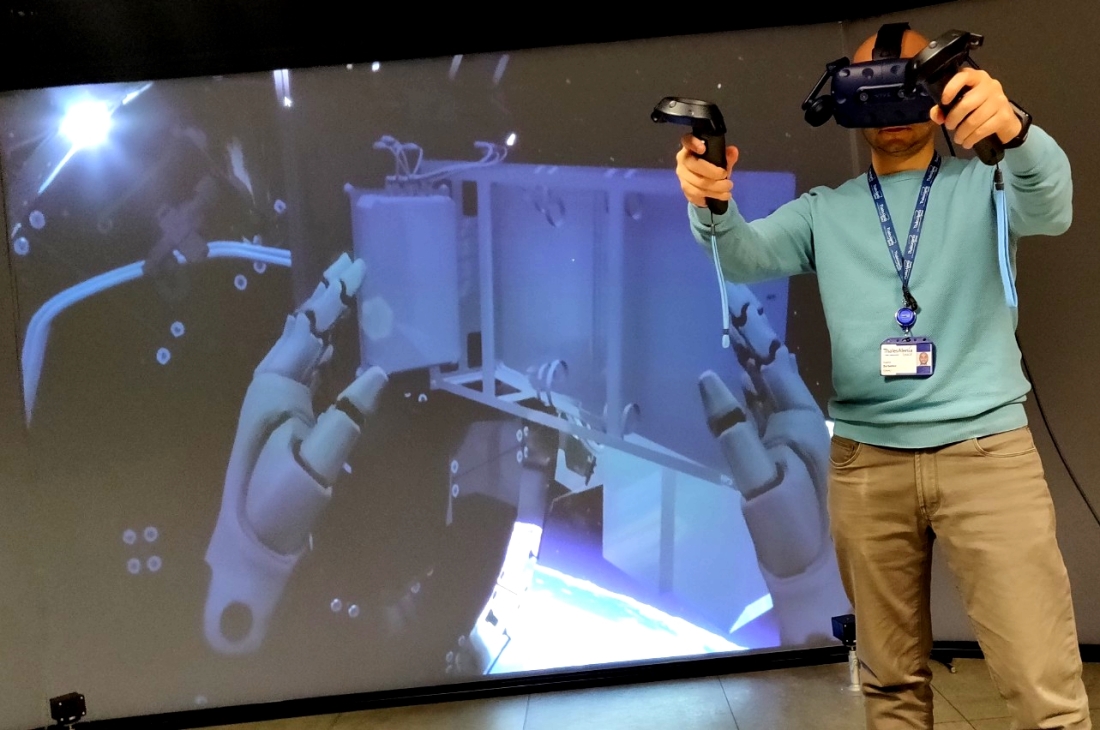
Virtual Reality demonstration to be unveiled @ VivaTech - © Thales Alenia Space
Like the two pressurized modules, Harmony (Node 2) and Tranquility (Node 3), the assembly of the Columbus lab started back in the clean rooms in Turin, Italy. The structure, thermal control system, survival equipment, plumbing and external protection were all completed in September 2001.
40% of the ISS built by Thales Alenia Space
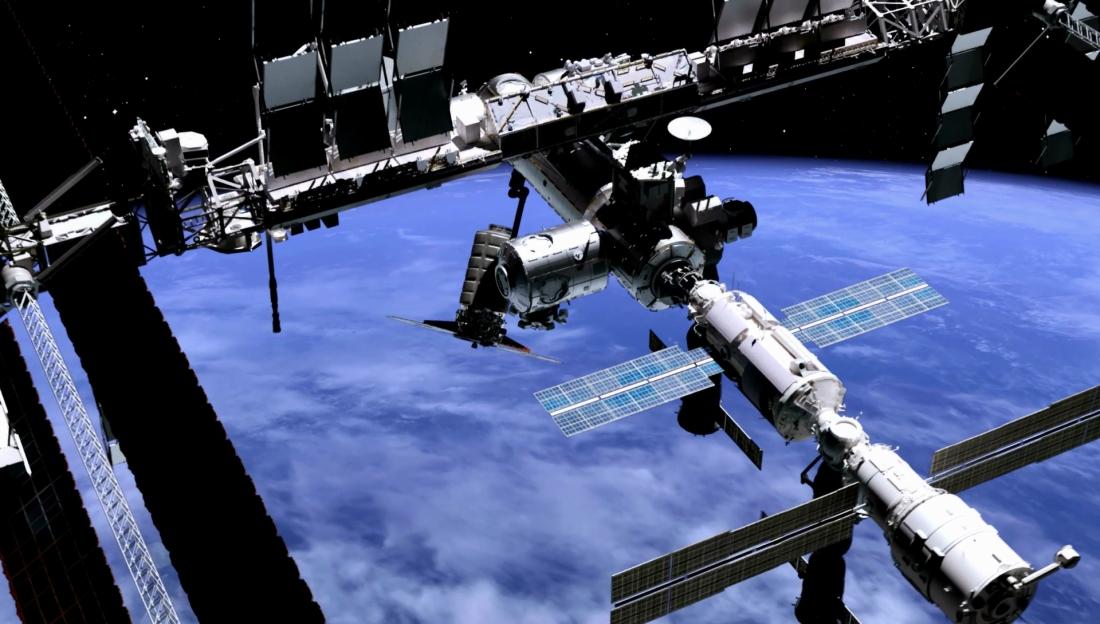
ISS © Thales Alenia Space/Master Image Programmes
The International Space Station (ISS) holds a special place in the hearts of Thales Alenia Space engineers based in Turin. Thales Alenia Space has supplied fully half of the pressurized volume on the ISS (40% of the entire station), including Nodes 2 and 3, the Multipurpose Module (MMP), Multipurpose Logistics Modules (MPLM), Cupola, Columbus lab structure, the pressurized cargo module for ATV resupply vessels and the structure for the Bishop commercial airlock from NanoRacks. Thales Alenia Space also supplies the pressurized cargo module for Cygnus resupply vessels on behalf of Northrop Grumman.
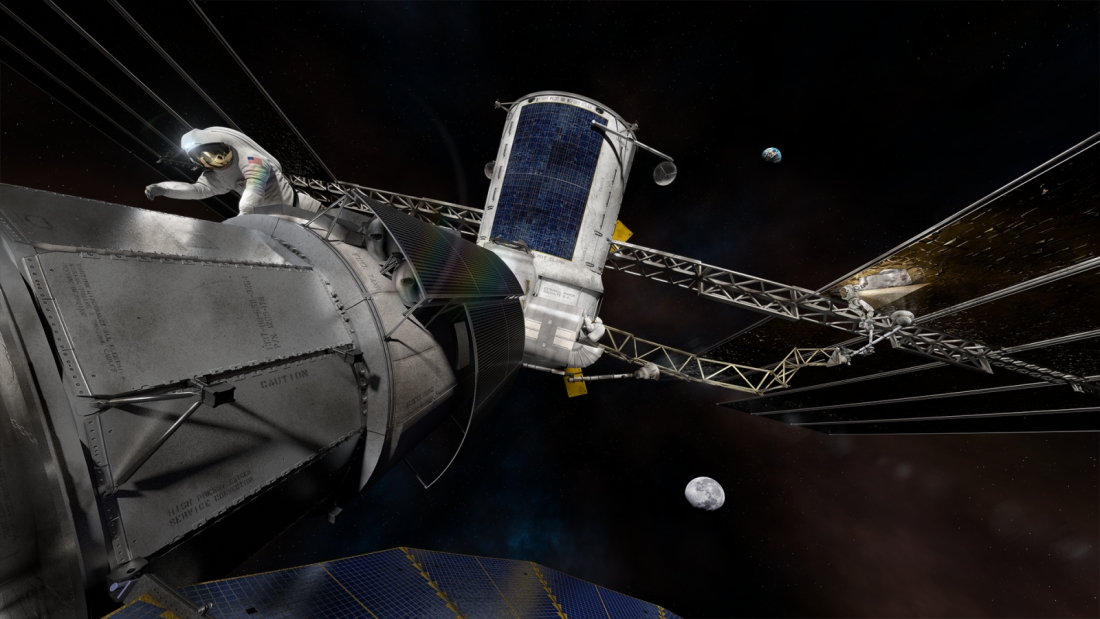
NextSTEP-2: © NASA
Looking beyond the ISS, Thales Alenia Space is gearing up for lunar missions, in particular with the LOP-G (Lunar Orbital Platform Gateway), and is carrying out design studies for NASA (as part of NextSTEP 2) and ESA. Furthermore, following the success of the IXV atmospheric reentry demonstrator, Thales Alenia Space is developing Space Rider, Europe’s new-generation, low-orbit, reusable space transport system.
PIUME, when you want to live life at the extremes!
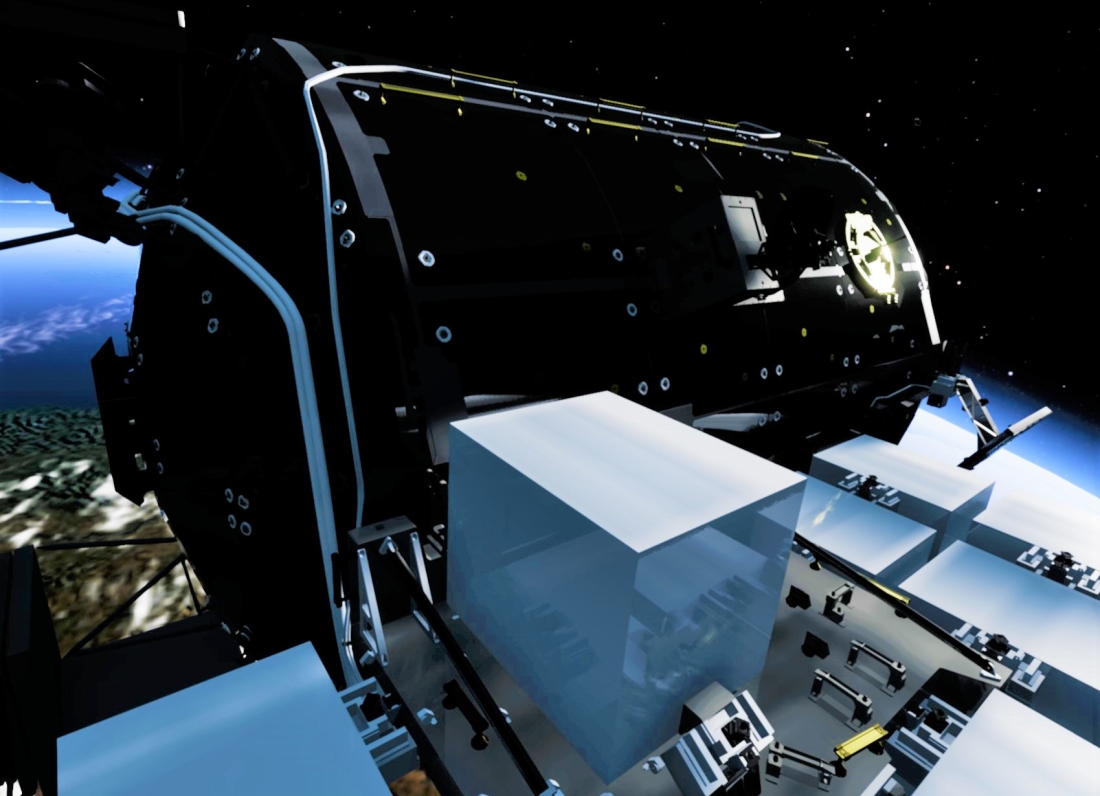
PIUME © Thales Alenia Space
PIUME (Portable Independent Utilities and Modules for Extreme conditions) will be featured in a virtual reality demonstration at VivaTech. Reflecting Thales Alenia Space’s expertise in manned spaceflight and orbital infrastructures on the International Space Station, this module can be deployed in all types of environments, including polar and desert bases, military forward observation posts, oil and gas rigs, etc. It’s based on a concept designed to ensure survival in isolated or hostile zones.
PIUME can also be custom-tailored to suit different users and environments, and it offers full connectivity to support remote assistance services. PIUME can be deployed on Earth or in space.
A leading contributor to major space exploration programs
Venus, Mars, Mercury, Titan, the Moon, asteroids and comets… Thales Alenia Space is a pivotal partner in Europe’s fantastic missions across the Solar System. Company staff will be on hand at VivaTech to explain our solutions and share their passion for space exploration.
ExoMars rover © Thales Alenia Space/Master Image Programmes
Thales Alenia Space is prime contractor for the current ExoMars program, a role it played on Herschel and Planck, the largest space observatories ever developed in Europe. The company also developed and integrated Corot, France’s own low-orbit “exoplanet” hunter (looking for planets outside our Solar System), and will be heavily involved in a new program called PLATO, also tasked with tracking exoplanets, but from the Lagrange 2 (L2) point, thanks to advanced telescope optical units built at the Leonardo facility in Campi Bisenzio, Italy in conjunction with leading universities and research organizations. We are also one of the lead partners on the recently launched BepiColombo mission, which will explore one of the most mysterious planets in the Solar System, Mercury.
Huygens © ESA
Thales Alenia Space built 25 of the 64 huge parabolic antennas (Europe’s contribution) for the giant ALMA radiotelescope array deployed on the Atacama plateau in Chile. In addition, Thales Alenia Space played a lead role on the famous Rosetta-Philae comet mission (especially via assembly, integration and testing of the spacecraft), as well as on Cassini-Huygens. This latter mission allowed us to explore the atmosphere of Titan and then make a trouble-free – if short-lived! – landing on Saturn’s most mysterious moon. The Huygens space probe was built by Thales Alenia Space as prime contractor. Also on the agenda at Thales Alenia Space is the European program Euclid, which will help us better understand dark matter.
ExoMars rover © Aster
In the meantime, Europe is holding its breath in the run-up to the ExoMars 2020 mission. ESA’s rover for this mission should touch down on Mars in 2021. Fitted with a special drill built by Leonardo near Milan, the rover will take soil samples at a depth of 2 meters, in an attempt to discover traces of past life (bacteria), while the Trace Gas Orbiter (TGO), launched in 2016, continues its mission in orbit around Mars, “sniffing” the Martian atmosphere to discover traces of methane gas in particular.
Space START: multipurpose in-orbit servicing
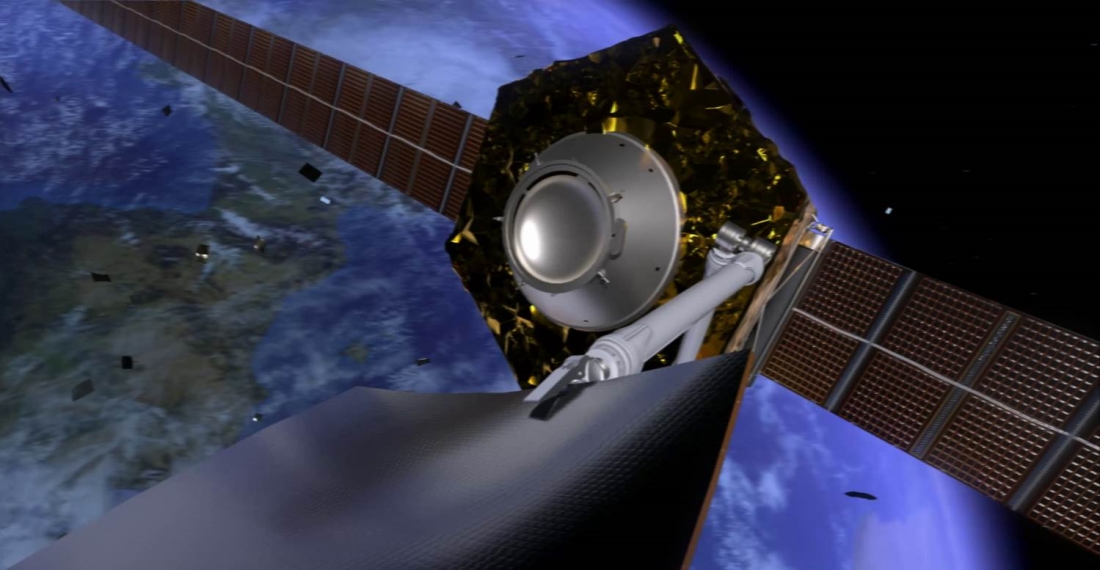
In-Orbit Servicing © Thales Alenia Space/Master Image Programmes
“Once a satellite is launched, you can’t service it in orbit.” This was always a truism among satellite-makers, but it may no longer apply in the near future. The reason is a new type of space vehicle, called the “Space Servicer”! As its name indicates, this type of spacecraft is designed for in-orbit servicing, a service now marketed by Thales Alenia Space under the Space START name. Highly versatile, Space Servicers can be used for a wide variety of orbital tasks, including deorbiting space debris, robotic manipulation, extending a satellite’s service life, fueling, inspection, etc. With these new space machines, we are changing the space paradigm, turning the current static situation into a dynamic environment.
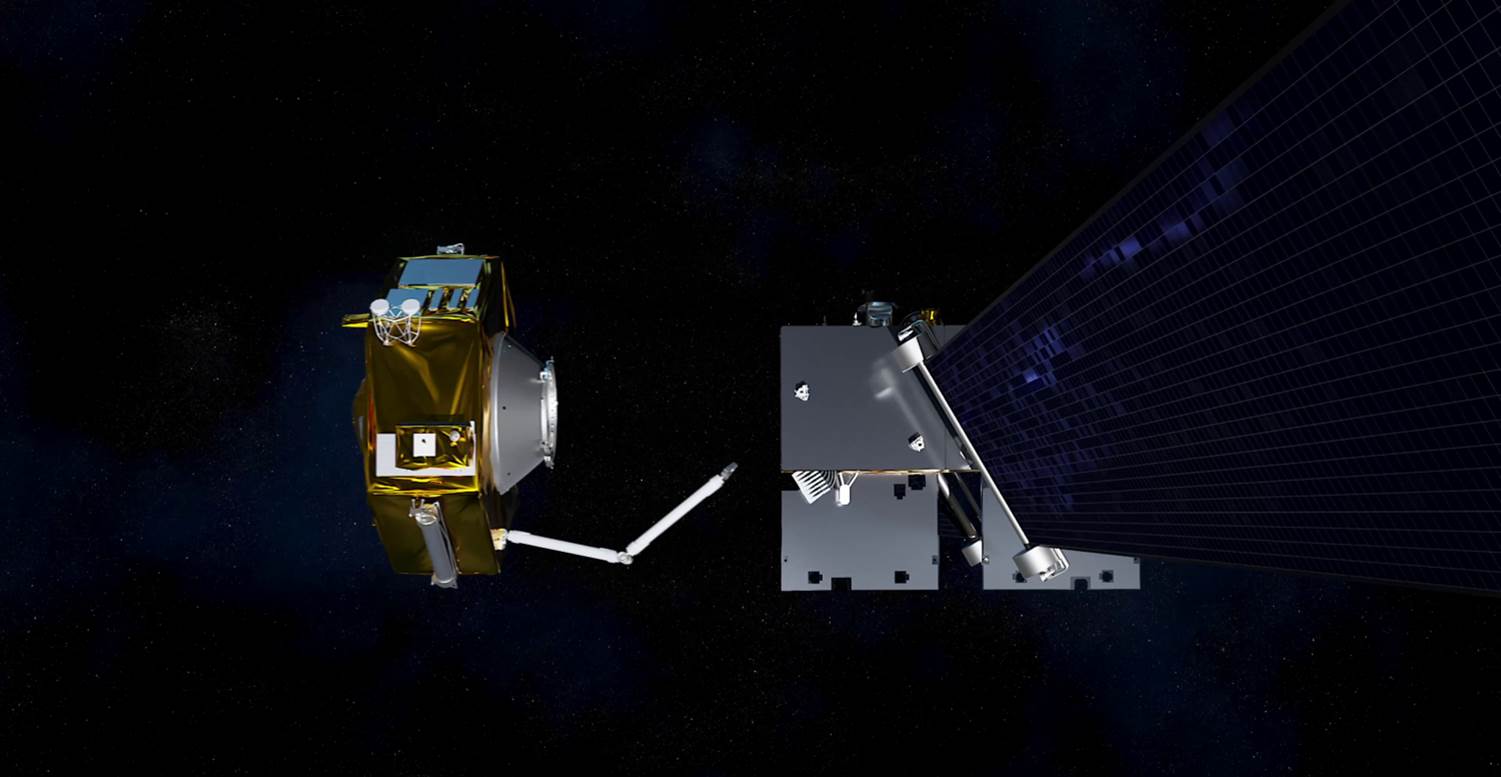
In-Orbit Servicing © Thales Alenia Space/Master Image Programmes
Thales Alenia Space is spearheading the development of in-orbit servicing, which will change our approach to space access. And if we do manage to build lunar bases in the future, Space Servicers will undoubtedly play a key role in the transport and assembly of the different components.
Climate change and satellites
Climate change is front-page news these days, and satellites have a role to play. As indicated by the recent UN report, we can now see, more than ever, how global warming reduces vegetation and increases desertification, while one animal species out of eight is currently threatened with extinction.
The dance of the Sentinels
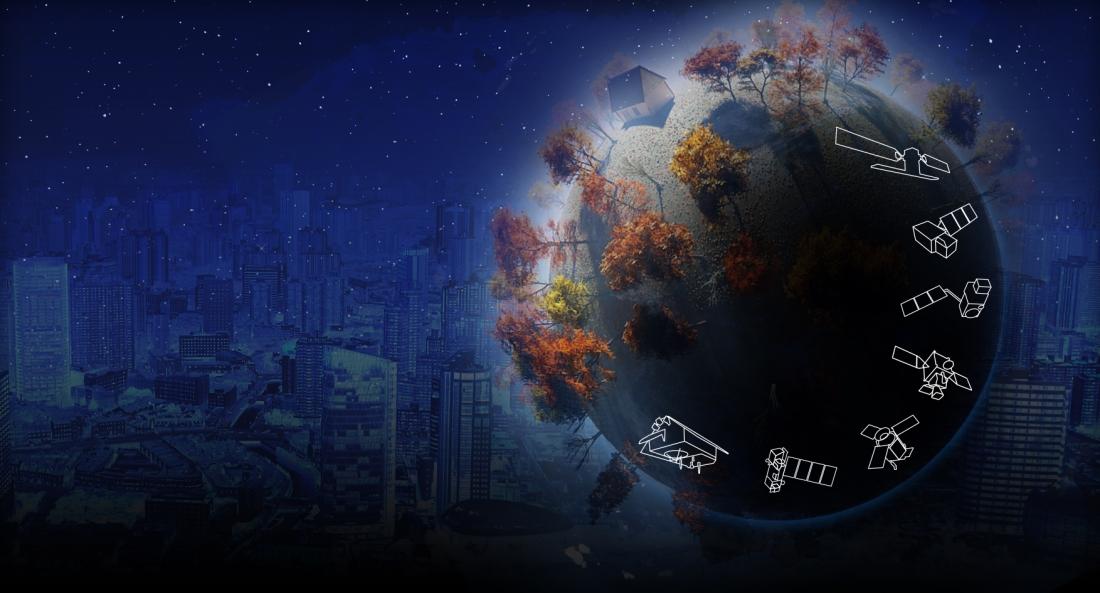
Copernicus family © ESA
Satellites play a key role in helping us understand global warming, by monitoring the Earth and providing invaluable data. The Sentinel series of Earth observation spacecraft is being developed on behalf of the European Space Agency (ESA) within the scope of the European Union’s Copernicus program. They are a key to Europe’s environmental monitoring efforts. These satellites are fitted with optical and radar sensors for imaging, altimeters to provide information concerning oceanography and climatology, and spectrometers to survey the atmosphere and measure greenhouse gases.
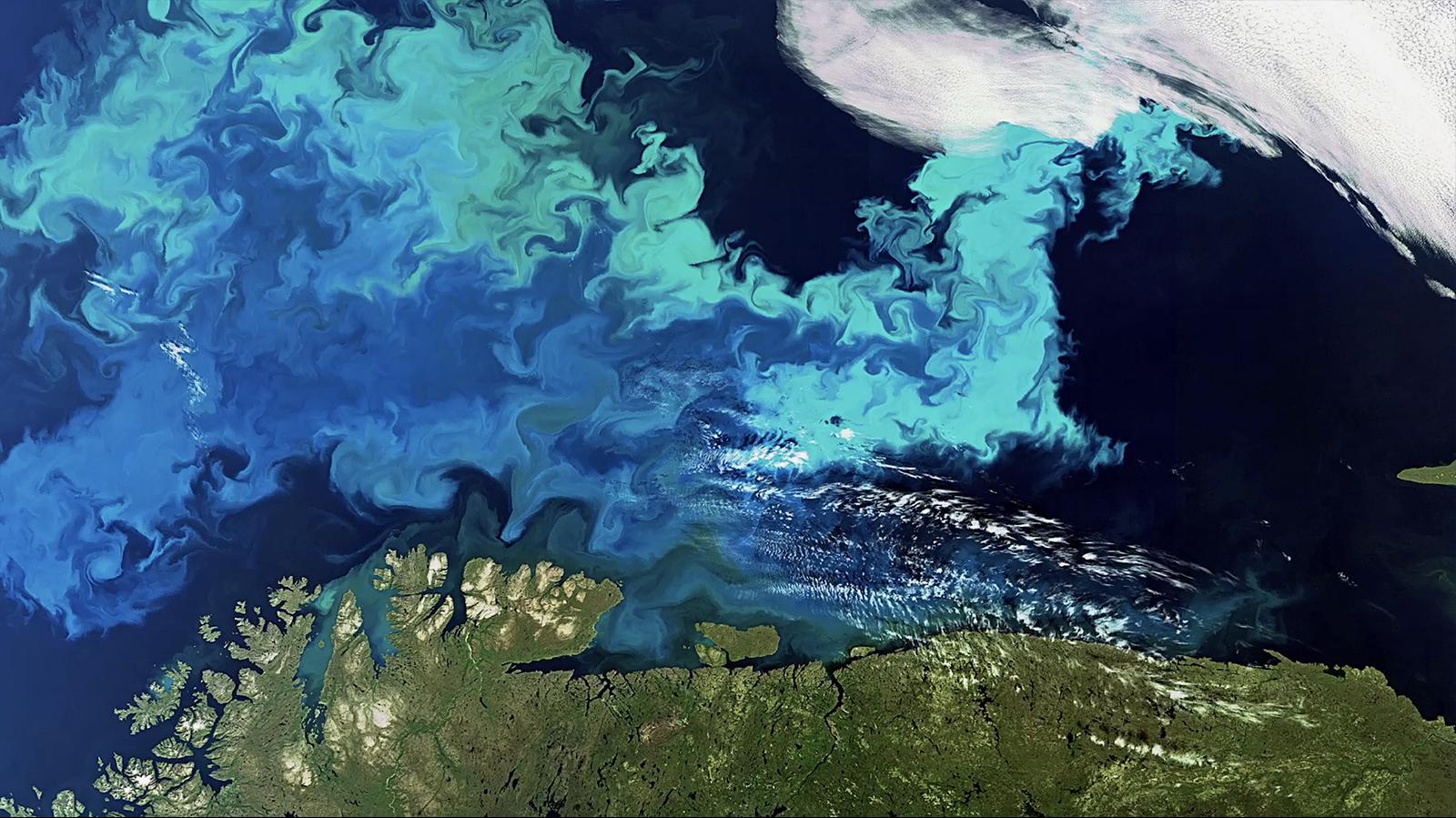
Copernicus data (2016) - Photo captured by Sentinel-3A
There are six Sentinel families of satellites or instruments: Sentinel-1 is designed to provide continuity for the radar data collected by ERS and Envisat; Sentinel-2 and Sentinel-3 are dedicated to monitoring land masses and oceans. The Sentinel-4 and -5 instruments are designed for meteorology and climatology missions. Sentinel-6 will provide operational continuity for Jason altimetry missions. Thales Alenia Space is prime contractor for the Sentinel-1 and -3 families (4 satellites each), in charge of the image ground segment for Sentinel-2, and makes the imaging spectrometer carried by Sentinel-5P as well as the Poseidon-4 radar altimeter for the Jason-CS/Sentinel-6 mission.
Improving weather forecasts
Thanks to Meteosat weather satellites, meteorologists have enjoyed a continuous supply of reliable data for their immediate and short-range weather forecasts for more than forty years.
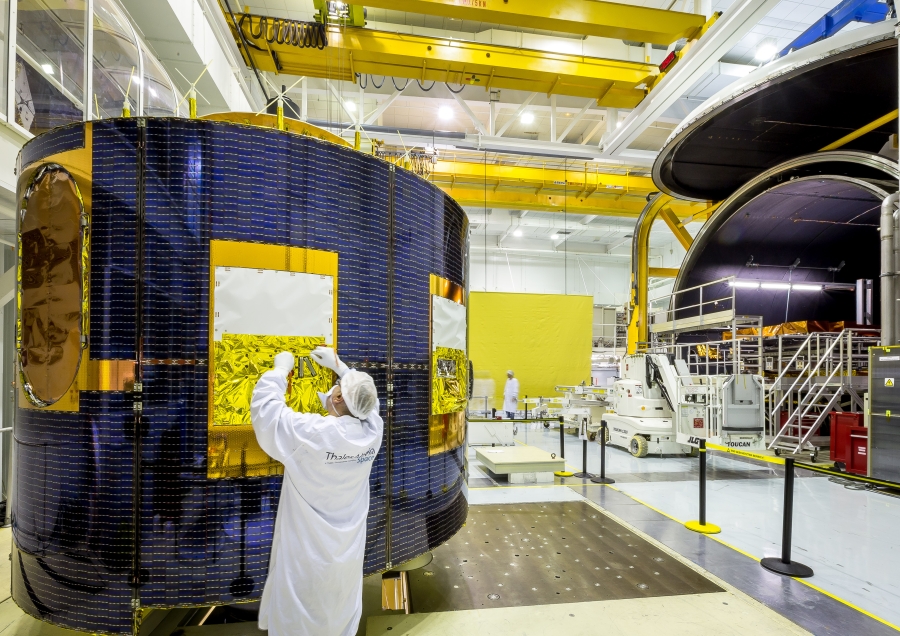
MSG-4 © Thales Alenia Space/Imag[IN]
Meteosat Second Generation (MSG) satellites cover Europe, the North Atlantic and Africa, sending updated images every 15 minutes, versus 30 minutes on first-generation satellites. With MSG, meteorologists benefit from higher-quality images because of a significant increase in the number of observation channels and better radiometric performance, coupled with shorter revisit times. This allows them to detect and monitor rapidly developing events such as storms, which directly impact both citizens and economic sectors such as agriculture, fishing and transportation, especially shipping.
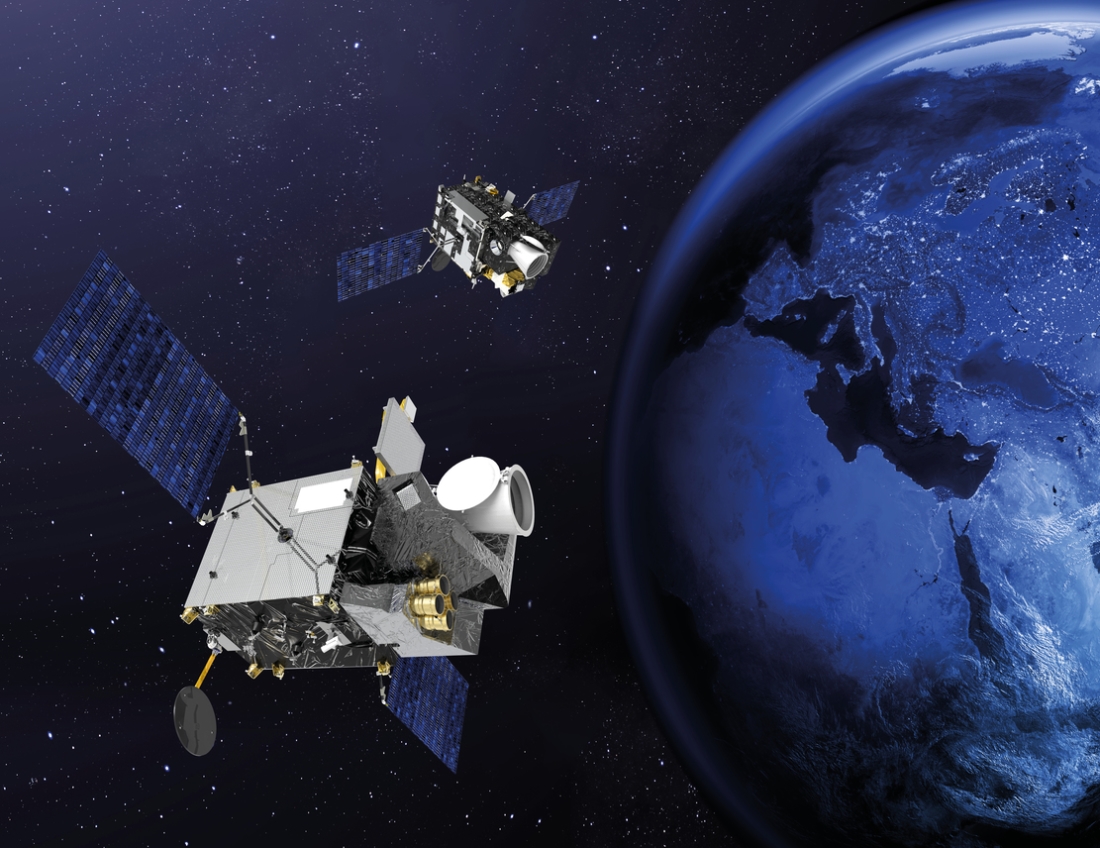
MTG © Thales Alenia Space/Master Image Programmes
Thales Alenia Space is now developing Meteosat Third Generation (MTG), which will update images every ten minutes to make weather forecasts more reliable than ever. Some MTG satellites are also fitted with atmospheric sounders to complement the images acquired. All European meteorological satellites were built by Thales Alenia Space as prime contractor.
New technologies to better understand global warming
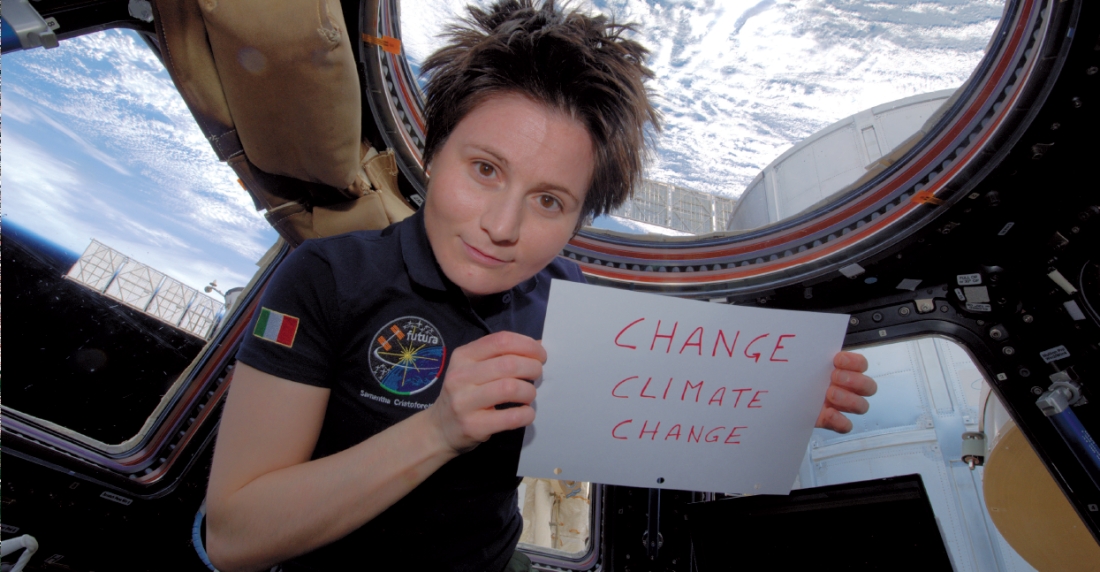
Samantha Cristoforetti - Cupola © ESA/Samantha Cristoforetti
New approaches such as cloud computing and big data can be used to process and analyze the huge streams of data coming from satellites.
For instance, artificial intelligence (AI) algorithms could be used to select pertinent data, automate monitoring or identify hidden correlations. We could also develop more specialized algorithms to detect any small, inadvertent changes in a set of images recorded over a given period. AI allows us to identify image content, while also quickly providing information on the surface of the Earth, and how it is being used for agriculture or urban development, as well as supporting the management of natural resources and vegetation monitoring.
AI can also be used to identify outliers in images, such as icebergs, fires, oil spills, etc. We could receive safety alerts in near real time, enabling us to save people’s lives. Concerning climate change, satellites are already playing a role… and this will be covered in one of the conferences at VivaTech this week in Paris.
First artistic view: © Thales Alenia Space/Marchioro